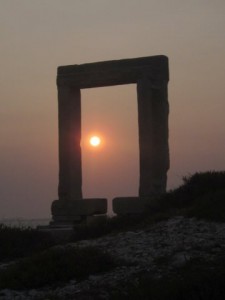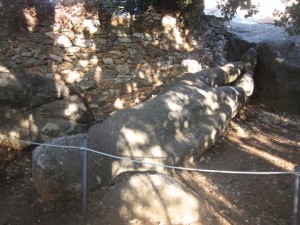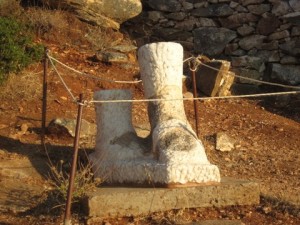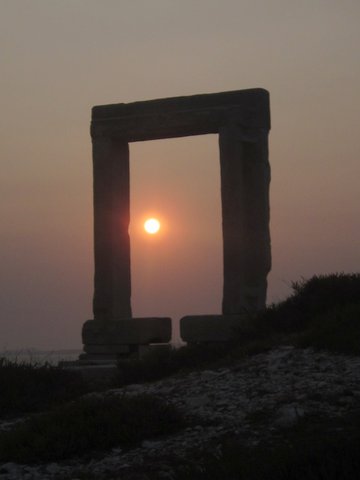In mythology, Naxos is the island where Theseus left Ariadne, whose string had guided him through the labyrinth so he could kill the dreaded minotaur. It seems Theseus, now saved from imminent death and just about to head home safely, had become enamored of a new girl, Aegle, and so while Ariadne slept, he quietly got his people onto their ships and sailed for Athens.

When Ariadne awoke and found herself alone, she realized the magnitude of the betrayal Theseus had done to her. She had chosen him over her family and her nation, helped him kill her half-brother, and left home trusting not just to the strength of his sword arm, but also to the honesty of his heart. And her reward was to be left alone on the beach, without even a goodbye or an explanation. She cried out for vengeance, and Zeus, hypocritically, nodded his agreement that this was a terrible crime and should be punished. But no punishment would ever be visited on Theseus, no matter how base his treachery or how bitter Ariadne’s tears.
Naxos has a tradition of heartbreak stretching back into antiquity, and when we visited I recognized in its simple and welcoming beauty a painfully familiar sensation that all artists should recognize.
The Doorway to Death
The most famous landmark on Naxos is the Portara, a huge doorway that was supposed to lead to a great temple of Apollo. Begun about 530 BC, only the walls were completed when the tyrant behind it was overthrown. Within a century, even the cult that was supposed to worship in the grand structure had died out. Over the following centuries, the walls of the structure were pilfered, with only the doorway left, supposedly because it was a single piece that was too large to move.
Instead, the doorway remains where it was, and in the evenings it frames the setting sun, a reminder of what usually happens to grand dreams. They fail and collapse or are pilfered, with a painful memory as the only thing left.
The Artist’s Unsteady Hand
But perhaps the most familiar feeling hit me when I saw the kourai. A kouros is a statue of a naked young man, often used to portray a god or other mythological figure. The kourai on Naxos are different, though. Naxos is one of the first places where the Greeks quarried marble, so they were still learning the tricks of carving it successfully. Because they didn’t know which blocks would break during carving and it was such an expensive endeavor to haul huge blocks of marble, they started carving the kourai in the quarry and only moved them once the riskiest parts of the sculpting were finished. When you visit the quarry today, there are several kourai that had to be abandoned because they broke.

That touched my heart as an all-too-familiar feeling. Having dedicated hundreds of hours to a work, you suddenly realize it is utterly, irretrievably broken, and it will never become what you hoped it would be. You have no choice but to abandon it and start again somewhere else.
The Road from Heartbreak

It was only much later that I realized the true meaning of these ancient works of art. Incomplete and imperfect as they are, they reached across the millennia to touch my heart. Because even failed art has that power.
This is an important but difficult lesson that all artists have to learn. Your work may be broken. Your work may be faulty. Your work may not be as grand as you wish it to be. It may not even be fully finished in your eyes. But you have to put it out in the world where it can do what it is supposed to: touch the hearts of an audience that will be enriched and enlivened by what you have made.
Which brings us back to Ariadne. After she had finished hurling her curses out at the sea, she fell to her knees on the sand and wept. The god Dionysus, who was wandering nearby, heard her sobs and came to comfort her (as wine is wont to do). He lifted her up and poured liberally and listened to her tale and fell in love with her. He then asked her to be his bride.
Shunned by a king, she became the wife of a god. She would wear no terrestrial crown, but a divine one, which had been worn by Thetis before her. And when she died, Dionysus put that crown in the heavens–it’s the Corona Borealis–so that he could always look on it and be reminded of his beloved. And it’s an important reminder to all of us: sometimes the greatest things in life begin with heartbreak.

